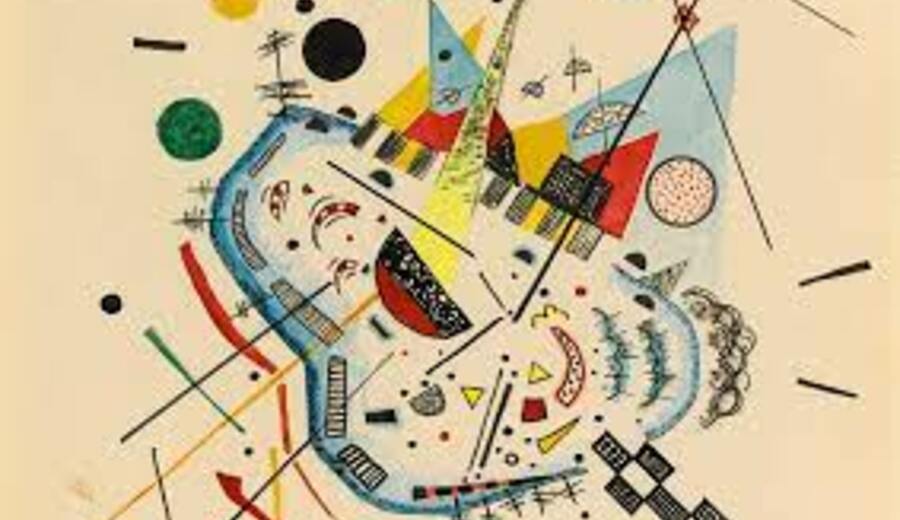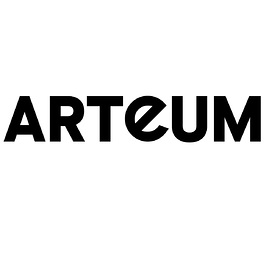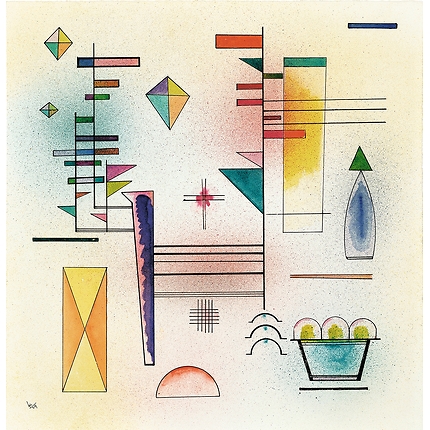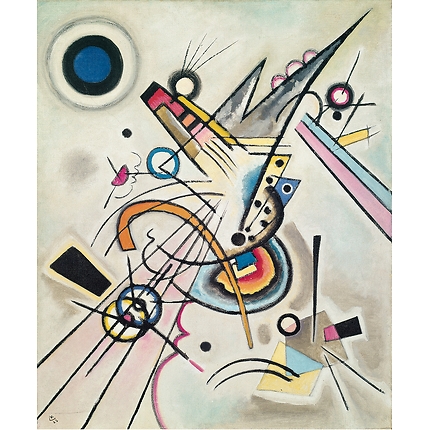Vassily Kandinsky


Vassily Kandinsky
His first paintings belonged more to the naturalist movement. However his different trips to Europe and a Parisian life between 1906 and 1907 enabled him to discover other trends thanks to Cézanne, Matisse and Picasso. His creations are organized in "impressions" (depending from the outside reality), "improvisations" and "compositions". In 1911, he questioned the _form_ in an article where he stated: "the form is the exterior expression of the interior content". All form is equal to another.
The war created a profound crisis in Kandinsky work. He almost did not paint from 1915 to 1918. The spirit came back alongside the Russian revolution when he was holding several official functions and educative activities (most of them were about reorganizing museums: he thought about replacing the chronological order by formal categories). In 1921, criticized for his actions, he moved to Germany and taught at the Bauhaus. His paintings became geometric and colored. The Bauhaus might have realized his utopian project of reconstructing a more spiritual world: he developed his researches through theory and practice but his hopes were to be quickly stopped by History. The Nazis closed the Bauhaus in 1933. So, he moved to Paris where he died in 1944. He remains the father of abstraction, the one who predicted abstract expressionism.
Filters
{{ keyword }}
-{{ keyword }}
{{ selectedFilter.label }}


